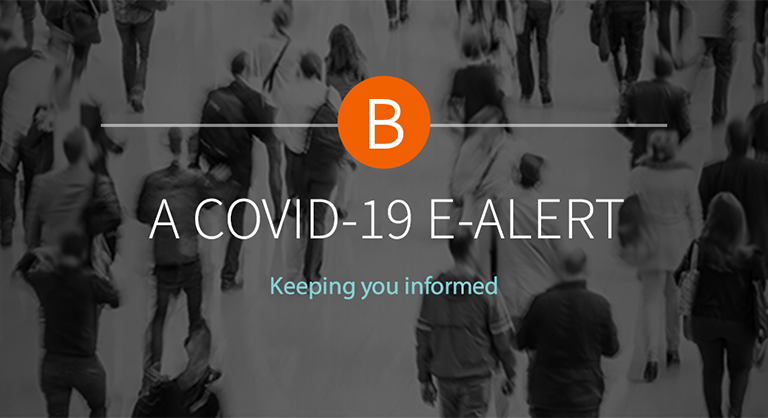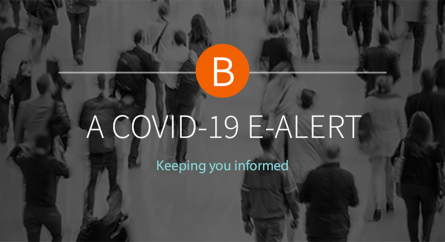New PPP Funding Hits the Streets – A Primer on What Businesses Should Know
Struggling businesses adversely impacted by the COVID-19 pandemic now have access to a second round of Paycheck Protection Program (“PPP”) stimulus funding enacted as part of the Economic Aid to Hard Hit Small Businesses, Nonprofits and Venues Act (the “Economic Aid Act”), which was signed into law on December 27, 2020. Applications for the prior round of PPP funding closed on August 8, 2020 after approval of more than $520 billion in loans guaranteed by SBA were extended through participating lenders.
The Economic Aid Act makes available an additional $285 billion of funding to first time borrowers, as well as access to a second draw loan for certain small businesses that previously received a PPP loan, and that meet a more stringent set of eligibility requirements. The Economic Aid Act extends PPP funding through March 31, 2021.
With New Loans Come New Regulations
On January 6, 2021, SBA and the Department of Treasury released two separate Interim Final Rules: (1) one covering second draw loans (“Business Loan Program Temporary Changes; Paycheck Protection Second Draw Loans”); and (2) a set of “consolidated rules” covering first draw loans (“Business Loan Program Temporary Changes; Paycheck Protection Program as Amended by Economic Aid Act”). The set of consolidated rules on first draw loans does some major housekeeping by combining into a single regulation the many existing rules concerning borrower eligibility and forgiveness. Most notable, however, is the expanded eligibility for certain borrowers and several new categories of permissible expenses.
First Draw PPP Loans – What First-Time Program Participants Should Know
A key feature of the new regulations is the expanded scope of permissible expenses. Loan funds may be used for additional categories of expenses (other than payroll, rent, mortgage interest and utilities), including: software and cloud computing expenditures; costs (not covered by insurance) for property damage occurring in 2020 from vandalism or looting; supplier costs in the form of documented expenditures made to a supplier of goods that are essential to the borrower’s operations; and worker safety costs incurred to comply with COVID-related federal regulations or guidance, including safety measures and personal protective equipment.
Another key aspect to the new regulations is expanded eligibility for certain borrowers. Eligible borrowers now expressly include housing cooperatives; destination marketing organizations; news organizations; and 501(c)(6) non-profit business associations. The regulations also delineate certain ineligible businesses that may not obtain a PPP loan, including any business not in operation on February 15, 2020; recipients of certain federal grants; public companies; and businesses that are permanently closed.
Second Draw PPP Loans – What Repeat Borrowers Should Know
The Second Draw regulations apply to borrowers who received a First Draw PPP loan and may also apply for and receive a second loan draw if certain restricted eligibility requirements are satisfied. For a Second Draw PPP loan, the fundamental loan terms remain essentially the same – the loans are 100% guaranteed and there is no collateral or personal guaranty requirement. The interest rate is 100 basis points (1%) and the loan has a 5-year maturity.
Borrower eligibility requirements, however, are more limited. First, the borrower must have received a first draw loan, the full amount of which it used, or will use, before disbursement of the second loan, on eligible PPP expenses. Because the second draw program was created for smaller businesses that continue to experience the adverse effects of the pandemic, a second-draw borrower must have no more than 300 employees, including employees of all affiliates (general SBA affiliation rules apply). There is an exception to the employee limit for hard-hit accommodation and food service sectors (NAICS 72) with multiple physical locations.
A second important eligibility requirement is that the borrower must have experienced reduced revenues of 25% or more in 2020 as compared to the same time frame, either annually or quarter vs. quarter, in 2019. Revenue calculations are based on “gross receipts,” which generally means all revenue in whatever form received or accrued (in accordance with the entity’s accounting method, i.e., accrual or cash), from whatever source, (in accordance with the entity’s accounting method, i.e., accrual or cash), including from the sales of products or services, interest, dividends, rents, royalties, fees, or commissions, reduced by returns and allowances but excluding net capital gains and losses.
To substantiate their certification of a 25 percent gross receipts reduction, borrowers may submit the following documentation (only one set is required): (1) quarterly financial statements for the entity (if unaudited, such statements must be signed and dated to attest to their accuracy); (2) quarterly or monthly bank statements for the entity showing deposits from the relevant quarters, with annotations from the borrower to demonstrate which deposits constitute gross receipts; or (3) annual IRS income tax filings of the entity (which are required if the borrower uses an annual reference period to calculate the reduction).
As for maximum loan amount, second draw PPP loans may be secured in an amount up to 2.5 times the borrower’s average monthly payroll, up to a maximum of $2 million. Accommodation and food services businesses with NAICS code 72 may borrow 3.5 times the average monthly payroll (again, up to $2 million). To calculate the maximum loan amount, borrowers may use either the trailing 12-month period prior to the loan application, or either of calendar year 2019 or 2020.
New Forgiveness Rules and Forms
Following the new Interim Final Rules, on January 19th, SBA and Treasury published updated loan forgiveness guidance and forms. Included in the new forgiveness forms is Form 3508S, a single page application form to be used by borrowers that received a PPP loan of $150,000 or less. With this form, borrowers are not required to submit supporting documentation, but they are required to maintain appropriate documentation to justify use of the funds for payroll and other eligible expenses.
Additional new forms include Form 3508 and Form 3508EZ. When applying for loan forgiveness using these forms, borrowers must submit supporting documentation showing use of the funds for payroll and other eligible expenses.
On January 19th, SBA and Treasury released an Interim Final Rule consolidating prior PPP loan forgiveness rules and incorporating changes made by The Economic Aid Act.
Should you have any questions regarding the new rules governing first or second draw loans, or if any assistance is needed to help navigate the forgiveness process, please reach out to Rory Fazendeiro or your attorney at Bowditch.
Categorized: COVID-19 Resources, Investment
Tagged In: coronavirus, COVID-19, Paycheck Protection Program, PPP, PPP Loans







